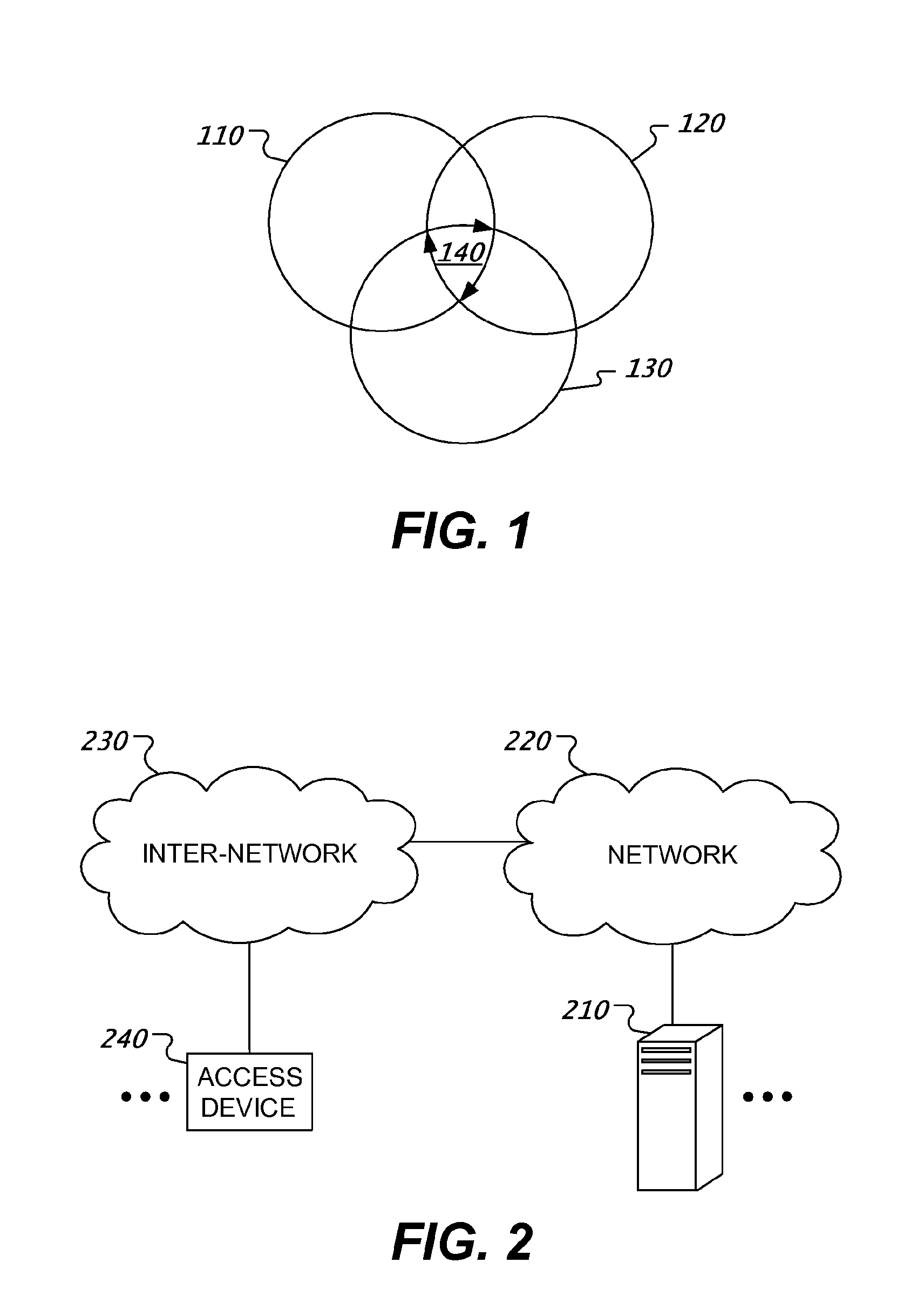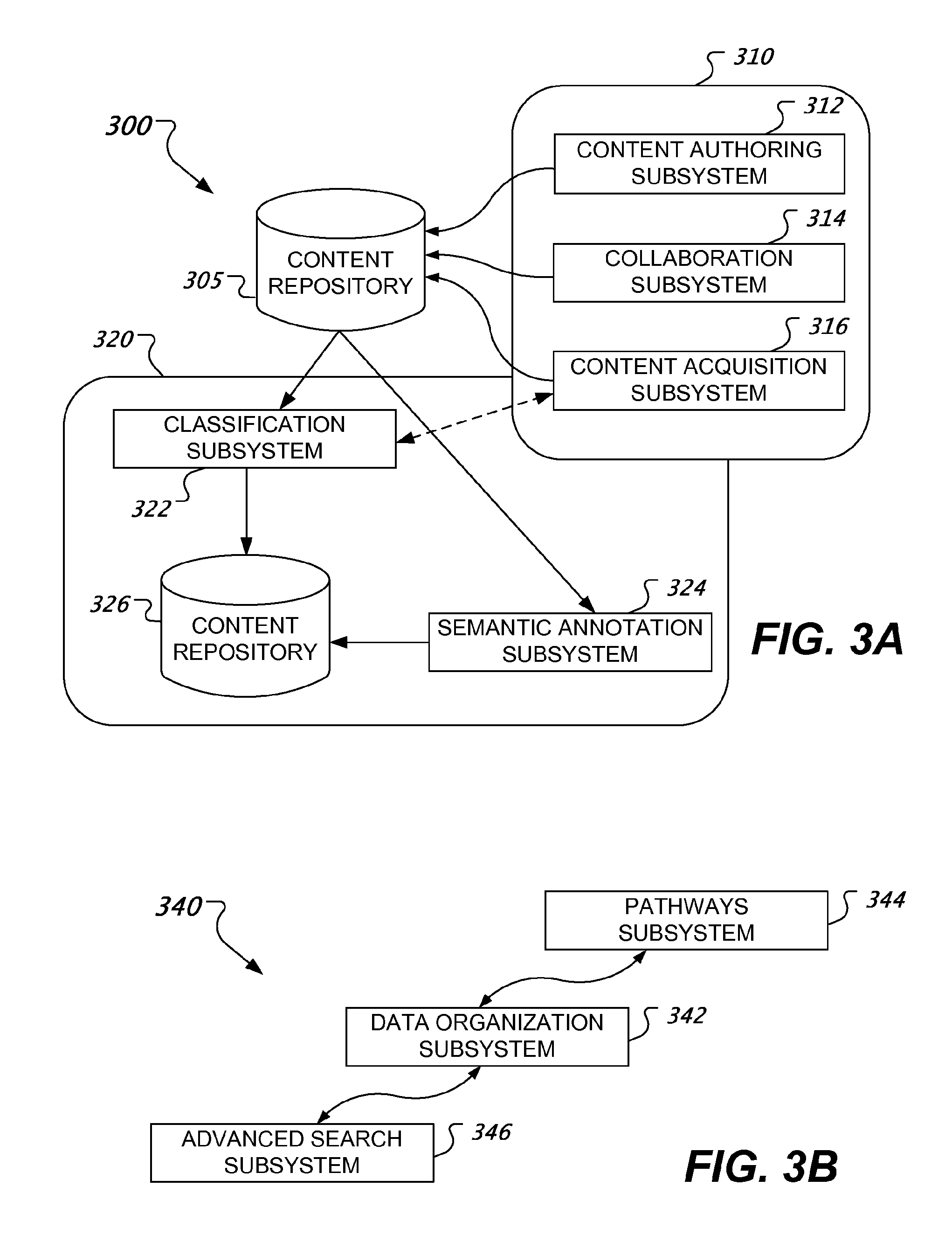Adaptive Knowledge Platform
a knowledge platform and knowledge technology, applied in the field of adaptive knowledge platforms, can solve the problems of scalable approach but can be very sensitive to the data in the document training set, and achieve the effects of facilitating and informed navigation through content, enhancing understanding and potential knowledge discovery, and convenient organization, filtration and access
- Summary
- Abstract
- Description
- Claims
- Application Information
AI Technical Summary
Benefits of technology
Problems solved by technology
Method used
Image
Examples
example 1
[0141]Suppose we want to look at a given set of information through an historian's perspective. Likely, an historian will view events through factors such as time, location, importance, cultural significance, etc. Hence, one possible way to define the historian's perspective is as follows:
PHN→3=(Dtime,13(Dlocation+Dculture+Drace),∑DS_N-4)where∑DS_N-4
is the weighted sum of the remanding axes.
example 2
[0142]Suppose we want to look at a given set of information through an educator's perspective. An educator may want to look at events through such factors as difficulty level, discipline, etc. One possible way to define the educator's perspective is as follows:
PEN→3(Dlevel,Ddiscipline,Dimpact)
Hence, the educator perspective ignores all dimensions other than difficulty level, discipline, and impact. During the dimension reduction process, the system can determine the location of information nodes according to a particular perspective by applying the perspective mapping.
[0143]In addition, the knowledge platform can be designed to evolve with new content. This can be supported in three ways. (1) Collaborative editing, supported by a collaborative contribution subsystem and providing designated users with the opportunity to contribute such content as (a) comments for personal use or to be read by other users, (b) new content, (c) contextual information (including visually represented in...
PUM
 Login to View More
Login to View More Abstract
Description
Claims
Application Information
 Login to View More
Login to View More - R&D
- Intellectual Property
- Life Sciences
- Materials
- Tech Scout
- Unparalleled Data Quality
- Higher Quality Content
- 60% Fewer Hallucinations
Browse by: Latest US Patents, China's latest patents, Technical Efficacy Thesaurus, Application Domain, Technology Topic, Popular Technical Reports.
© 2025 PatSnap. All rights reserved.Legal|Privacy policy|Modern Slavery Act Transparency Statement|Sitemap|About US| Contact US: help@patsnap.com



